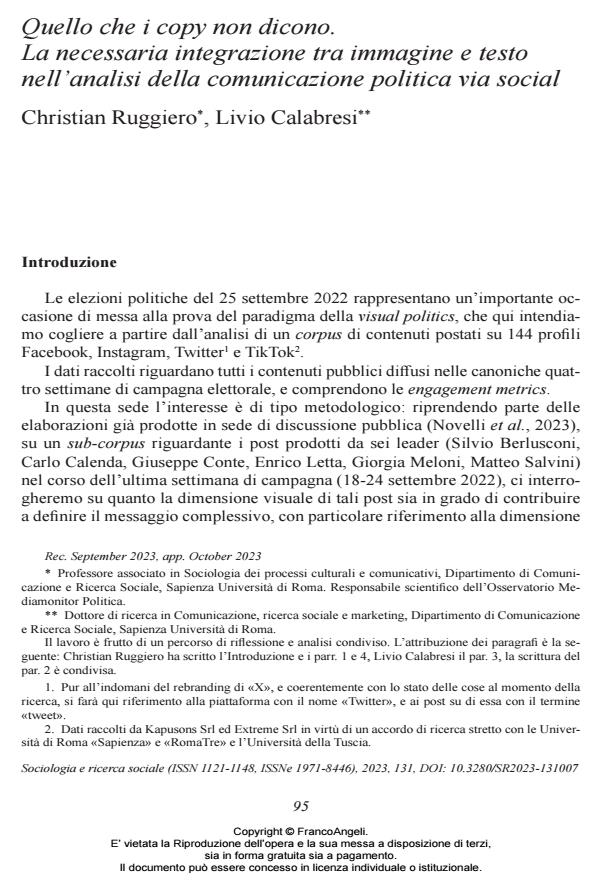What the copy does not say. The necessary integra- tion between image and text in the analysis of political communication via social
Journal title SOCIOLOGIA E RICERCA SOCIALE
Author/s Christian Ruggiero, Livio Calabresi
Publishing Year 2023 Issue 2023/131
Language Italian Pages 14 P. 95-108 File size 224 KB
DOI 10.3280/SR2023-131007
DOI is like a bar code for intellectual property: to have more infomation
click here
Below, you can see the article first page
If you want to buy this article in PDF format, you can do it, following the instructions to buy download credits

FrancoAngeli is member of Publishers International Linking Association, Inc (PILA), a not-for-profit association which run the CrossRef service enabling links to and from online scholarly content.
The contribution aims to examine the contribution of digital data in research in political communication with reference to production of social content in election campaigns. It will argue for the need to integrate text-based analysis with research strategies able to capture information from the iconographic apparatus of posts. This hypothesis is tested by a sample of the contents posted by the major leaders in the running in the Italian parliamentary elections of 2022 on different platforms (Twitter, Facebook, Instagram, TikTok), from which emerge strategies that can exploit the multimodal nature of content spread via social.
Christian Ruggiero, Livio Calabresi, Quello che i copy non dicono. La necessaria integrazione tra immagine e testo nell’analisi della comunicazione politica via social in "SOCIOLOGIA E RICERCA SOCIALE " 131/2023, pp 95-108, DOI: 10.3280/SR2023-131007